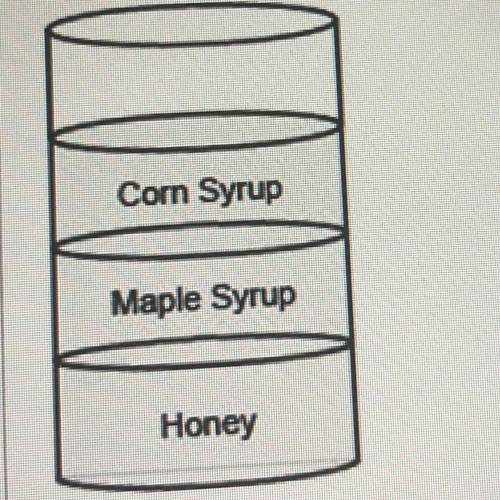
The diagram shows the layers formed when 10 mL each of honey, maple syrup, and corn syrup were
slowly poured into a glass cylinder.
A ping pong ball released gently into the cylinder floats on top of the corn syrup layer. What best
compares the densities of the substances?
All liquids are denser than the ball, and honey is denser than corn syrup and maple syrup.
O Corn syrup is denser than the other liquids and the ball.
O Honey is denser than corn syrup but less dense than the ball.
Corn syrup is denser than the other liquids, and the ball is denser than the liquids.


Answers: 1


Other questions on the subject: Chemistry

Chemistry, 22.06.2019 14:30, Playboycxm
Chemistry worksheet - i am not sure what they are asking for exactly?
Answers: 1



Chemistry, 22.06.2019 22:30, StupidFatChipmunk
What must be in balance for temperatures to remain constant?
Answers: 1
You know the right answer?
The diagram shows the layers formed when 10 mL each of honey, maple syrup, and corn syrup were
slow...
Questions in other subjects:

Mathematics, 20.08.2020 06:01

English, 20.08.2020 06:01



Mathematics, 20.08.2020 06:01


Mathematics, 20.08.2020 06:01



English, 20.08.2020 06:01



